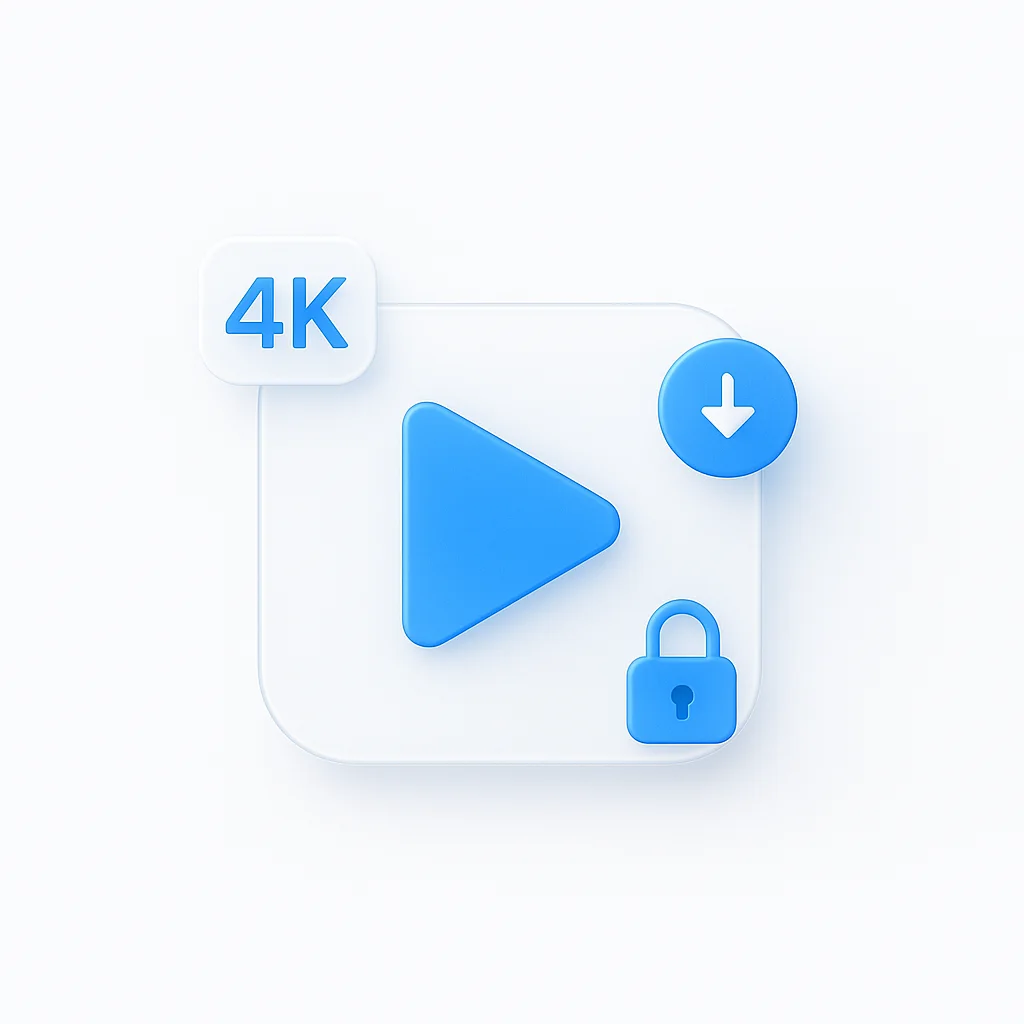¿Estás cansado de batallar para encontrar la iluminación perfecta para tus grabaciones de video? ¡No busques más! Hemos explorado el mercado para traerte la guía definitiva de las mejores soluciones de iluminación que llevarán tus videos de aburridos a deslumbrantes. Dile adiós a las sombras y hola a un set bellamente iluminado que cautivará a tu audiencia desde el primer fotograma. ¡Prepárate para brillar como una estrella con nuestras recomendaciones de primera categoría!
Introducción
En el mundo de la grabación de video, la iluminación juega un papel fundamental. Tiene el poder de transformar un video ordinario en una obra maestra visualmente atractiva. Una escena bien iluminada puede comunicar el estado de ánimo, enfatizar elementos importantes y guiar el ojo del espectador a través del encuadre. Puede mejorar drásticamente la calidad de la imagen, haciéndola más nítida, clara y agradable a la vista.
Una buena iluminación no se trata solo de asegurar que todo sea visible, sino de utilizar la luz como una herramienta de narración para resaltar al sujeto, llamar la atención y crear profundidad y textura. Un video expertamente iluminado contribuye significativamente a un contenido de alta calidad, marcando la diferencia entre una producción de aspecto profesional y una amateur. Por lo tanto, comprender cómo usar la iluminación de manera efectiva es una habilidad crucial para cualquier videógrafo.
Comprendiendo los conceptos básicos de la iluminación
Una comprensión integral de la iluminación comienza con algunos conceptos fundamentales. Una de las configuraciones más básicas en la grabación de video es la iluminación de tres puntos. Esta configuración incluye una luz clave, la fuente principal que ilumina al sujeto; una luz de relleno, utilizada para rellenar las sombras proyectadas por la luz clave; y una luz de fondo, que separa al sujeto del fondo y da profundidad a la escena. Al ajustar estas tres fuentes, un videógrafo puede controlar la apariencia del sujeto y el estado de ánimo general de la escena.
A continuación, es esencial comprender la diferencia entre la luz natural y la luz artificial. La luz natural, que proviene del sol, puede crear imágenes hermosas y realistas, pero también puede ser impredecible y difícil de controlar. Por otro lado, las fuentes de luz artificial, como lámparas y accesorios de iluminación, ofrecen más control sobre la intensidad, la dirección y el color, pero pueden requerir más equipo y configuración.
Finalmente, la temperatura del color juega un papel fundamental en la iluminación de video. Medida en Kelvins, la temperatura del color puede afectar el estado de ánimo y la sensación de tu video. Las temperaturas más bajas (alrededor de 3200K) producen una luz cálida y anaranjada que se usa a menudo para tomas en interiores, mientras que las temperaturas más altas (alrededor de 5600K) producen una luz fría y azul que se usa comúnmente para escenas al aire libre que imitan la luz del día.
Comprender y controlar la temperatura del color es esencial para mantener la precisión y la coherencia del color en tus videos.
Tipos de luces utilizadas en la grabación de video
- Luces incandescentes: Estas luces son lo que la mayoría de la gente piensa cuando imagina una bombilla tradicional. Producen un brillo cálido y natural, pero pueden ser ineficientes y generar mucho calor. Aunque han sido ampliamente utilizadas en el pasado para la producción de video debido a su espectro de color suave, están siendo reemplazadas lentamente por alternativas más eficientes energéticamente.
- Luces fluorescentes: Estas son más frías y eficientes energéticamente que las luces incandescentes. Ofrecen una luz suave que es adecuada para la grabación de video, reduciendo la necesidad de difusores. Sin embargo, las luces fluorescentes tradicionales no siempre representan los colores con precisión. Los accesorios fluorescentes modernos diseñados para la producción de video abordan este problema proporcionando una luz más equilibrada y natural.
- Luces LED: Las luces LED son extremadamente populares en la industria del video debido a su eficiencia energética, durabilidad y baja emisión de calor. Vienen en temperaturas de color y niveles de brillo ajustables, ofreciendo una solución versátil para diferentes condiciones de grabación. En el lado negativo, algunas luces LED de menor calidad pueden producir un espectro de luz ligeramente desigual.
- HMI (Haluro Metálico de Mercurio): Los HMI son un tipo de lámpara de arco que proporciona una intensa salida de luz. Son muy eficientes y ofrecen una temperatura de color similar a la luz del día, lo que las convierte en una buena opción para grabar en exteriores o simular la luz del día en interiores. Sin embargo, pueden ser bastante caras y requieren balastos específicos para funcionar, que pueden ser voluminosos y pesados.
Cada tipo de luz tiene sus ventajas y desventajas, y la mejor opción depende de tus necesidades específicas, el entorno de grabación y tu presupuesto.
Equipo de iluminación esencial para la grabación de video
Una buena configuración de iluminación implica más que solo las luces en sí. El equipo de iluminación esencial puede variar desde soportes de luz para sostener tus luces a la altura y el ángulo correctos, hasta modificadores como softboxes y paraguas que pueden ayudar a suavizar y dar forma a la luz.
- Soportes de luz: Estos son cruciales para posicionar tus luces correctamente. Vienen en varios tamaños y resistencias para soportar diferentes tipos de luces.
- Softboxes: Los softboxes difuminan la luz, creando una luz más suave y uniforme que puede reducir las sombras duras. Son perfectos para una luz clave o una luz de relleno en una configuración de iluminación de tres puntos.
- Paraguas: Al igual que los softboxes, los paraguas difuminan la luz, pero también pueden extender la luz más ampliamente. Se pueden utilizar para crear una luz de relleno o una luz clave amplia.
- Reflectores: Los reflectores pueden rebotar la luz sobre tu sujeto y rellenar las sombras. Son especialmente útiles cuando se graba con luz natural.
Existen opciones económicas y de alta gama para cada uno de estos tipos de equipos. Por ejemplo, un videógrafo en ciernes con un presupuesto ajustado podría optar por un simple panel de luz LED y un par de soportes de luz, mientras que un estudio profesional podría invertir en un conjunto de HMI de alta potencia y una variedad de modificadores de luz.
Equipo de iluminación mejor valorado para la grabación de video
Elegir el equipo de iluminación adecuado puede ser una tarea desalentadora debido a la vasta gama de opciones disponibles en el mercado. Las características clave a considerar al seleccionar el equipo incluyen el control de la intensidad de la luz, el control de la temperatura del color, la portabilidad, la durabilidad y, por supuesto, el costo.
- Nivel principiante: Para aquellos que recién comienzan, el Neewer 2 Packs Dimmable Bi-color 480 LED Video Light es una gran opción. Este kit económico ofrece control de temperatura de color, difusores y soportes, lo que lo hace perfecto para tomas a pequeña escala o estudios en casa.
- Nivel intermedio: Para los videógrafos más experimentados, el Godox SL-60 Video Light ofrece mayor potencia y precisión de color a un precio de gama media. Su ventilador silencioso, control remoto y construcción sólida lo convierten en una opción robusta para un usuario intermedio.
- Nivel profesional: Para los profesionales que exigen lo mejor, el Aputure 120D Mark 2 destaca. Esta luz ofrece una excelente precisión de color, una salida potente y una gama de modificadores. Está diseñada para la durabilidad y la versatilidad, satisfaciendo las necesidades de las tomas más exigentes.
Técnicas avanzadas de iluminación para la grabación de video
Una vez que tengas el equipo, dominar las técnicas avanzadas de iluminación puede ayudarte a maximizar tu configuración de iluminación:
- Difuminar la luz: Suaviza la luz de tu fuente para minimizar las sombras duras y extenderla de manera más uniforme. Utiliza softboxes y difusores, o rebota la luz en una superficie blanca.
- Rebotar la luz: Refleja la luz de una superficie reflectante para iluminar a un sujeto indirectamente. Esta técnica ayuda a crear una luz más suave y a rellenar las sombras no deseadas.
- Usar geles: Los geles pueden alterar el color de tu fuente de luz. Utilízalos para igualar la temperatura de color de diferentes luces o para añadir un efecto de color creativo a tu escena.
Configuración de iluminación de estudio casero DIY
Crear un estudio en casa no tiene por qué ser una tarea costosa. Aquí tienes una guía básica paso a paso:
- Elige el espacio adecuado: Busca un espacio con iluminación controlada, donde puedas ajustar la luz de las ventanas con cortinas y persianas extra anchas. Estas son especialmente útiles en habitaciones o espacios más grandes con ventanas anchas, lo que te brinda un mejor control sobre el brillo y el deslumbramiento.
- Posiciona tu luz clave: Coloca la luz clave en un ángulo de 45 grados con respecto a tu sujeto para resaltar las características sin causar sombras duras.
- Añade una luz de relleno: En el lado opuesto, coloca tu luz de relleno para suavizar las sombras creadas por la luz clave.
- Configura tu luz de fondo: Posiciona tu luz de fondo detrás del sujeto, apuntando hacia él. Esto separará al sujeto del fondo y añadirá profundidad a tu toma.
- Experimenta con la luz natural: Si tu habitación tiene buena luz natural, utiliza reflectores para rebotarla sobre tu sujeto para obtener una luz hermosa y suave.
Comprendiendo la calidad de la luz y su impacto en la grabación de video
En la grabación de video, no solo importa la cantidad de luz, sino también su calidad. La calidad de la luz se clasifica típicamente en dos tipos: luz dura y luz suave.
- Luz dura: Este tipo de luz proviene directamente de la fuente y produce sombras fuertes y bien definidas. Se puede utilizar para crear efectos dramáticos, resaltar texturas y enfatizar contrastes. Sin embargo, la luz dura también puede resultar en reflejos sobreexpuestos y sombras demasiado oscuras si no se utiliza correctamente.
- Luz suave: La luz suave se difumina, ya sea por la atmósfera, un difusor o por el reflejo en otra superficie. Produce sombras más suaves con bordes menos definidos, lo que resulta en una escena iluminada de manera más uniforme. Generalmente es favorecedora para los sujetos, ya que puede minimizar la apariencia de textura e imperfecciones.
La calidad de la luz puede afectar significativamente el estado de ánimo y el tono del video. La luz suave generalmente transmite un estado de ánimo tranquilo, pacífico o cotidiano, mientras que la luz dura se puede utilizar para crear tensión, suspenso o un estado de ánimo surrealista.
Las sombras y el contraste también son fundamentales en la producción de video. Las sombras pueden añadir profundidad y dimensión a una escena, haciéndola lucir menos plana y más realista. El contraste, la diferencia entre las áreas más claras y más oscuras de la escena, se puede utilizar para dirigir la atención del espectador, enfatizar elementos importantes y añadir drama a una escena.
Iluminación para diferentes tipos de contenido de video
La configuración de iluminación adecuada puede variar significativamente dependiendo del tipo de contenido que estés creando.
- Vlogs y tutoriales: Para vlogs y tutoriales, la luz suave y favorecedora es generalmente preferible. Una configuración básica de iluminación de tres puntos puede funcionar bien para este tipo de videos.
- Entrevistas: En una configuración de entrevista, es importante iluminar bien al sujeto sin crear sombras duras en su rostro. El uso de una luz clave, una luz de relleno y una luz de fondo puede ayudar a lograr esto. Dependiendo del estado de ánimo de la entrevista, podrías ajustar la intensidad y el color de las luces.
- Documentales: La iluminación de documentales debe apoyar la historia y el tema. A menudo necesita ser adaptable a diferentes ubicaciones y situaciones. Las luces naturales, prácticas y portátiles se utilizan con frecuencia en este caso.
- Transmisiones en vivo vs. Videos pregrabados: Las transmisiones en vivo requieren una configuración de iluminación consistente y confiable, ya que no puedes ajustar la iluminación en la postproducción. Los videos pregrabados permiten más flexibilidad, ya que puedes ajustar la iluminación para diferentes tomas y corregir algunos problemas de iluminación durante la edición.
- Videografía de productos: Al fotografiar productos, el objetivo es resaltar las características del producto y hacer que se vea atractivo. Esto a menudo requiere una mezcla de diferentes fuentes de luz, como la luz principal para resaltar el producto, las luces de fondo para separar el producto del fondo y posiblemente algunas luces de acento para resaltar características específicas del producto.
Medidas de seguridad para la iluminación
El manejo de equipos de iluminación implica diversas consideraciones de seguridad, ya que un manejo inadecuado puede provocar lesiones o daños. Aquí hay algunos pasos de seguridad a seguir:
- Manejo del equipo: Siempre maneja el equipo de iluminación con cuidado. Muchos dispositivos de iluminación, especialmente las bombillas, son frágiles y pueden romperse fácilmente.
- Seguridad eléctrica: Siempre asegúrate de que tus manos estén secas antes de tocar cualquier equipo eléctrico. Además, evita sobrecargar los circuitos con demasiadas luces y asegúrate de que todo tu equipo esté debidamente conectado a tierra.
- Gestión del calor: Algunos tipos de luces, como las luces de tungsteno, pueden calentarse mucho. Deja que las luces se enfríen antes de manipularlas y mantenlas alejadas de materiales inflamables.
- Estabilidad: Asegúrate de que todos los soportes sean estables y seguros y de que las luces superiores estén sujetas de forma segura. Utiliza sacos de arena o pesas para estabilizar los soportes si es necesario.
- Gestión de cables: Mantén los cables organizados y fuera del camino para evitar riesgos de tropiezos. Utiliza cinta adhesiva para asegurar los cables al suelo si es necesario.
Tendencias futuras en la iluminación de grabación de video
El campo de la iluminación para grabación de video está en constante evolución, con nuevas tecnologías y tendencias emergentes que prometen cambiar el panorama de la producción de video:
- Avances LED: Las luces LED ya son ampliamente utilizadas en la producción de video, pero los nuevos avances las están haciendo aún más eficientes y versátiles. Por ejemplo, estamos viendo luces LED con mayor precisión y consistencia de color, así como controles mejorados para la temperatura e intensidad del color.
- Sistemas de iluminación inteligentes: Con la llegada de la tecnología inteligente, los sistemas de iluminación se están volviendo más programables y personalizables. Estos sistemas se pueden controlar de forma remota, programar o incluso programar para responder a disparadores específicos.
- Realidad aumentada (RA) y Realidad virtual (RV): A medida que avanzan las tecnologías de RA y RV, se requerirán nuevas técnicas y herramientas de iluminación para crear entornos de iluminación realistas e inmersivos en estos espacios virtuales.
- Soluciones de iluminación sostenibles: A medida que la sostenibilidad se convierte en una preocupación más importante, podemos ver un aumento en las soluciones de iluminación energéticamente eficientes y respetuosas con el medio ambiente.
Conclusión
Comprender y dominar la iluminación en la producción de video es un esfuerzo complejo pero gratificante. No solo mejora la calidad visual de tu trabajo, sino que también impacta significativamente el estado de ánimo y la narrativa de tu contenido.
A lo largo de nuestra discusión, hemos profundizado en los conceptos y técnicas fundamentales de iluminación, como la iluminación de tres puntos y el uso de luz dura y suave. Hemos considerado la variedad de equipos de iluminación disponibles, cada uno con sus pros y sus contras, y cómo estas herramientas pueden adaptarse a diferentes presupuestos y niveles de habilidad.
Se subrayó la importancia de la calidad de la luz, su impacto en el estado de ánimo, el tono del video y la gradación del color. También hemos tocado cómo las configuraciones de iluminación se pueden adaptar para adaptarse a varios tipos de contenido, desde vlogs y entrevistas hasta transmisiones en vivo y videografía de productos.
Se presentaron herramientas avanzadas de control de iluminación como viseras, snoots, rejillas y banderas, y exploramos cómo se emplean estas herramientas en entornos profesionales para dar forma y controlar la luz.
Se enfatizaron las consideraciones de seguridad al manipular equipos de iluminación, asegurando que la creatividad nunca comprometa la seguridad.
Por último, arrojamos luz sobre las emocionantes tendencias futuras en la iluminación para grabación de video, incluidos los avances LED, los sistemas de iluminación inteligentes y las soluciones de iluminación sostenibles, lo que indica que el ámbito de la iluminación de video está en continua evolución y ofrece nuevas oportunidades.






